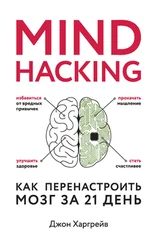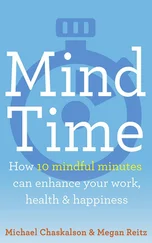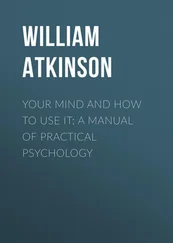Darla Anderson, an executive producer on Pixar blockbusters like Monsters, Inc . and Toy Story 3 , says, “Part of my job [as a producer] is to make sure everyone is smooshing together. If I don’t see lots of smooshing, I get worried.” 7Pixar has mastered the art of smooshing, and your mind hacking efforts will be greatly strengthened by adding more smoosh to your schedule.
At Pixar University, the company’s in-house training and development division, a Latin crest hangs on the wall. Around a cartoon drawing of a three-eyed alien in a cap and gown reads the motto Alienus Non Diutius . Translated, it reads “Alone No Longer.”
Me and My Homebrews
If you lived in Menlo Park, California, in the late 1970s, you may have seen the following advertisement pinned to a community bulletin board at your local library:
Are you building your own computer? If so, you might like to come to a gathering of people with like-minded interests. Exchange information, swap ideas, help work on a project, whatever. 8
On the scale of world-changing historical documents, this does not seem quite as profound as the Magna Carta or the Declaration of Independence, neither of which end with the word “whatever.” But what emerged from that simple advertisement may end up shaking up history in an even bigger way.
The Homebrew Computer Club was started in 1975 by Gordon French and Fred Moore, geeks ahead of their time. The first meeting was held, appropriately enough, in French’s garage. At the first meeting, they breathlessly unveiled the new MITS Altair 8800 microcomputer, a build-it-yourself computer that kicked off the microcomputer revolution. “After my first meeting,” Steve Wozniak later recalled, “I started designing the computer that would later be known as the Apple I. It was that inspiring.” 9
As the Homebrew Computer Club grew, it moved to the Stanford Linear Accelerator Center, but the real action would happen afterward, in the informal “swap meets” held in the parking lot of a local Safeway. 10It was mind-melding collaboration that rocked the nation: Adam Osborne (who founded Osborne Computer Corporation), Jerry Lawson (who created the first cartridge-based video game system), and the legendary phone phreaker John Draper.
These were our founding geekfathers, all hanging out next to the Safeway, and it is impossible to overstate their importance to the Digital Revolution: out of this group came the earliest versions of the hardware, software, and operating systems that power our devices today. Even more significantly, this group was the kernel of what we now call Silicon Valley and the prototype for its culture of openness and collaboration. And it all came out of that humble invitation to “exchange information, swap ideas, whatever.”
Ideas are a funny thing: they’re more powerful when they’re shared. Thomas Jefferson recognized this when he said, “That ideas should freely spread from one to another over the globe, for the moral and mutual instruction of man, and improvement of his condition, seems to have been peculiarly and benevolently designed by nature.”
The economist Paul Romer argues that this is because ideas, like telephones, have network effects: the more they’re shared, the more useful they become. “When we share objects, we make them less valuable,” he observes in Jonah Lehrer’s Imagine: How Creativity Works . “You don’t pay as much for a used car because it’s already been used. But ideas don’t work like that. We can share ideas without devaluing them. There is no inherent scarcity.” Ideas are not only infinite, but the more we share them, the more valuable they become.
“That is why places that facilitate idea sharing tend to become more productive and innovative than those that don’t,” Romer continues. “Because when ideas are shared, the possibilities do not add up. They multiply .” 11This explains why Silicon Valley is such a hotbed of innovation, with its culture of sharing ideas in Safeway parking lots. It explains why Boston, with over one hundred colleges and universities, is a vast hub of innovation: to get great ideas, just add students and shake.
My favorite example of the power of collaboration is Tel Aviv, which has one of the hottest technology start-up scenes in the world. During a recent visit to Israel, I asked one of our Israeli clients how their relatively small country turns out so many great companies. He pointed out that, in Israel, military service is mandatory for all young people. This means you are, in Pixar’s words, “smooshed together” with people from different backgrounds and social classes, and forced to rapidly exchange information to solve problems: a college student could find herself leading a squadron into a simulated battle.
This situation not only kick-starts kids into maturing more quickly, it also helps them develop problem-solving skills based on rapid collaboration. You learn to depend on your team, to share information, and to help make your own ideas better—all fantastic skills for starting a technology business.
Sharing ideas makes them better . “As long as there is spillover between minds,” says author Steven Johnson in Where Good Ideas Come From , “useful innovations will be more likely to appear and spread. It’s not that the network itself is smart; it’s that the individuals get smarter because they’re connected to the network .” 12
By collaborating, we give our ideas new ways to connect. Whether it’s in a supermarket parking lot, a conference room, or an auditorium, when we meet like-minded minds, we can “exchange information, swap ideas, help work on a project,” or indeed, “whatever.”
Helping Others Helps Yourself
The next best decision I made, after the decision to get sober, was to call my friend Mike.
Mike was a recovering alcoholic, and I confess I was scared to call him. If I told no one I was getting sober, only my wife and I would know if I failed. But telling Mike was another story: now I had another person who knew my intention.
I’m not sure what I expected from Mike. Maybe a sympathetic ear, or a few words of encouragement. But Mike took the bull by the horns. “Good for you,” he said. “There’s a meeting tonight. Let’s go.”
Mike not only got me involved with twelve-step programs, but he was brutally honest that I needed to practice helping other people . His advice was all the more powerful because Mike spends a significant amount of his time helping other recovering alcoholics: speaking at halfway houses, rehab centers, and church basements across New England. He’s like the Mother Teresa of alcoholics, if Mother Teresa had a crew cut and spoke with a Boston accent.
This form of collaboration—helping each other get and stay sober—is a tradition among recovering alcoholics. I could call Mike at any time of the day or night, and he would be there; what’s more, he regularly reached out to me . I have a hard enough time answering text messages from my own mother, so the sacrifices that Mike makes to help others is incredibly inspiring, and gives you hope for the human race. And there are many others just like Mike, an anonymous underground of help and support.
Even if you’re not trying to get free of addiction, helping other people is still a particularly powerful form of collaboration. When you help other people, you’re also helping yourself . For example, when you teach something, you also deepen your own understanding, which is why I encouraged you to teach the concepts of mind hacking at the beginning of this book. Teaching makes us define and articulate a subject; even when you think you know it, you don’t really know it until you’ve explained it to someone else.
Читать дальше
![Джон Харгрейв Mind Hacking [How to Change Your Mind for Good in 21 Days] обложка книги](/books/404192/dzhon-hargrejv-mind-hacking-how-to-change-your-min-cover.webp)











